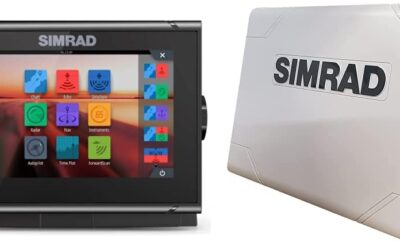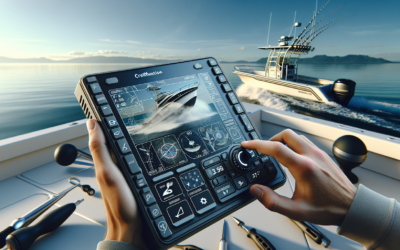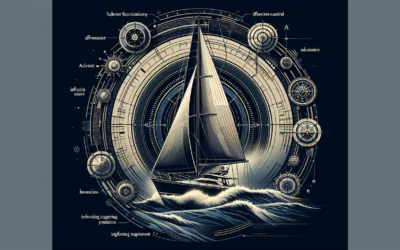In “Beyond The Boat: Using Fish Finders For Shore Fishing,” you’ll explore a world where technology revolutionizes the traditional fishing experience right from the shore. Rather than being confined to a boat, you will discover how using fish finders can enhance your angling skills, increasing your catch rate and providing an unexpected edge to your fishing game. This lively twist on an age-old pastime presents a fresh perspective, offering a guide to navigate this new-wave methodology. So, strap on your fishing gear, because fishing from the shore has never been this fascinating and fulfilling, and the next big catch could be just a beep away!
Understanding The Concept of Shore Fishing
A great way to start this discussion is by first understanding the concept of shore fishing.
What is Shore Fishing?
Shore fishing, as the name suggests, is a type of fishing that is done from the shoreline, rather than from a boat in the open water. You may fish from a beach, a riverbank, a pier, or any similar place where water meets land. It’s a simple and straightforward way to fish, often preferred by beginners, children, and those who simply want to unwind and enjoy the surrounding nature.
Differences between Shore Fishing and Boat Fishing
Shore fishing and boat fishing appear to be similar activities. Both involve a rod, a reel, bait, and someone eager to catch fish. However, they are fundamentally different in several ways. Apart from the obvious difference in location, with shore fishing happening on the shore and boat fishing on a boat, there are other differences. Boat fishing allows you to cover more water and reach deeper depths or distant hotspots, but it requires a significant investment in a watercraft and related equipment. On the other hand, shore fishing is more accessible, less expensive and allows for more conveniences like being closer to facilities and having more space to move around.
Advantages and Disadvantages of Shore Fishing
Shore fishing has a range of advantages. Some of the most notable benefits include its accessibility to virtually anyone, its cost-effectiveness, and its versatility. As shore fishing doesn’t require a boat, it reduces the overall cost significantly. You can fish from various environments like beaches, piers, or riverbanks. However, disadvantages exist as well. Fishing spots may be limited, it might be more challenging to cast into deeper waters, and you might face more competition from other anglers.
Introduction to Fish Finders
Fish finders have revolutionized the art of fishing in many ways.
What are Fish Finders?
Fish finders, also known as sounders, are electronic devices that use sonar technology to locate fish underwater. They help you find where the fish are hiding, their size, and the depth of water where they are located, significantly increasing your chances of a successful catch.
Components of a Fish Finder
A typical fish finder is composed of two parts: a display screen and a transducer. The display screen shows the data captured. The transducer is the part of the device that sends out and receives the sonar signals, mapping out what lies beneath the water.
How Fish Finders Work?
Fish finders work on the principle of sound waves and echoes. The transducer sends out sound waves which penetrate the water. When these sound waves hit an object, like a fish, they bounce back. These bounced waves are then captured by the transducer, translated into visual data on the screen, showing you where the fish are.
Advantages of Using Fish Finders for Shore Fishing
Using fish finders in shore fishing yields many benefits.
Enhanced Detection Capacity
Fish finders enhance detection capacity, making it easier to locate fish. You can detect fish hiding in difficult locations, thus improving the overall success of your fishing expedition.
Improved Fishing Accuracy
With a fish finder, you can pinpoint the exact location of fish, increasing your fishing accuracy. You can also gauge the size of the fish, helping you to cast the right bait, and make a successful catch.
Detailed Mapping and Structuring of Underwater Topography
Fish finders also offer a detailed view of the underwater topography, making it easier to understand the underwater environment. This information can also be invaluable in identifying hotspots and potential fishing locations.
Types of Shore Fishing Fish Finders
There are three main types of fish finders used in shore fishing.
Casting Fish Finders
Casting fish finders are small, portable devices that can be attached to your fishing line and cast into the water. The device then sends data back to your smartphone or a dedicated display unit.
Mountable Fish Finders
Mountable fish finders can be attached to a variety of surfaces, such as a pier or a dock. These are more stationary and might be used in regular fishing spots or locations where you plan to fish for a longer duration.
Handheld Fish Finders
Handheld fish finders provide the greatest mobility. These devices are convenient, light, and usually have a built-in display.
Comparing the Types of Shore Fishing Fish Finders
Comparison between these types depends on your requirements, fishing style, and budget. Casting fish finders might be more suitable for dynamic and mobile fishing, whereas mountable fish finders can be great for fixed-location fishing. Handheld fish finders offer convenience, and are great for exploratory or ‘on-the-move’ fishing.
Choosing The Right Fish Finder For Shore Fishing
When choosing a fish finder for shore fishing, several factors should be considered.
Factors to Consider when Buying a Fish Finder
One of the crucial factors to consider is the type of water you’ll be fishing in. Saltwater and freshwater have different densities, affecting the performance of a fish finder. Other factors include the type of fishing (whether stationary or dynamic) and your budget.
Brand Recommendations for Shore Fishing Fish Finders
There are plenty of brands producing high-quality fish finders. Some of the top brands include Garmin, Humminbird, and Lowrance. However, it’s essential to consider your individual needs and preferences.
Price Range for Shore Fishing Fish Finders
The prices of fish finders can vary widely. Depending on their features and capabilities, they can price anywhere between $100 to over $1000.
How To Use a Fish Finder While Shore Fishing
Using a fish finder properly can significantly improve your shore fishing experience.
Setting Up the Fish Finder
Getting your fish finder set up correctly is critical. Position the device, whether it is mounted, cast, or handheld, in a manner that optimizes how the sonar waves are transmitted and received.
Interpreting Data From the Fish Finder
Learning how to read the data displayed on the fish finder is also crucial. Understanding this could mean the difference between identifying a school of fish or missing them entirely.
Tips for Optimizing Fish Finder Use
Some tips for optimizing fish finder use include adjusting the sensitivity settings according to water clarity and depth, understanding the color schemes of your fish finder, and regularly updating your fish finder’s software to ensure optimal performance.
Challenges of Using Fish Finders for Shore Fishing And Overcoming Them
Like any technology, fish finders come with their fair share of challenges.
Low Readability in Sunny Conditions
Many fish finders have screens that become hard to read in direct sunlight. You can overcome this by getting a fish finder with a sun-readable display or using a screen shield.
Surface Clutter
Surface clutter is a common problem for fish finders. Adjusting the sensitivity settings can significantly reduce this issue.
Signal Interference
Signal interference can be caused by other electronics or structures around the shoreline. To deal with this, make sure to give your fish finder plenty of space around other devices.
Solutions to Common Fish Finder Problems
In addressing these problematic issues, it’s crucial to understand that most of them can be resolved by understanding the working of your device better. Carefully read the manual, understand the settings of your fish finder, and don’t hesitate to reach out to the manufacturer’s support for detailed help.
Maintenance and Care for Fish Finders
Like any other electronic device, fish finders require regular maintenance and care.
Cleaning and Storage of Fish Finders
After each use, the fish finder should be cleaned with a soft, damp cloth and then dried. Always store your device in an area where it will be safe from impact and extreme temperatures.
Battery Care and Replacement
Always ensure your fish finder’s battery is well charged and replace it as advised by the manufacturer. Remember, a weak or old battery can negatively impact your fish finder’s performance.
Troubleshooting Common Issues in Fish Finders
Having knowledge of how to troubleshoot common issues can go a long way in extending the life of your device. You might need to reset your fish finder occasionally. If things seem awry, consult your device’s manual or get in touch with customer service.
Legal Factors and Regulations Concerning Fish Finders
There are legal aspects around the use of fish finders as well.
Regulations on the Use of Fish Finders
Some regions have specific rules and regulations about using fish finders. Always ensure you are aware of these regulations before using a fish finder.
Non-compliance Implications
Non-compliance with these regulations might lead to penalties or even a ban on fishing in those regions. Always prioritize legal compliance, especially regarding regulations aimed at preserving local aquatic environments and species.
Responsible and Ethical Use of Fish Finders
In adherence to being a responsible angler, always use fish finders responsibly. This involves respecting the fish populations, the environment, and fellow anglers. Overfishing is a serious concern, and it’s crucial to maintain an ethical approach even when technologies like fish finders make fishing easier.
The Future of Fish Finders in Shore Fishing
Looking ahead, the role of fish finders in shore fishing seems to be strengthening.
Emerging Technologies in Fish Finders
Fish finders are continually evolving with augmented reality (AR) technologies, enhanced map detailing, and real-time data analytics becoming more prevalent. This makes the prospect of shore fishing even more exciting.
Impacts of Fish Finders on the Fishing Industry
The impacts of fish finders on the fishing industry have been significant. Not only have they made fishing more accessible for everyone, but they have also lead to more scientific research and planning in fishing strategies, impacting the industry at large positively.
Future Trends in Shore Fishing with Fish Finders
The future of shore fishing with fish finders looks promising. With these technologies becoming more advanced, affordable, and easier to use, it’s safe to say that fish finders will continue to enhance the shore fishing experience. As we move forward, these devices will undoubtedly become an essential tool for any shore angler, changing the landscape of shore fishing as we know it.









